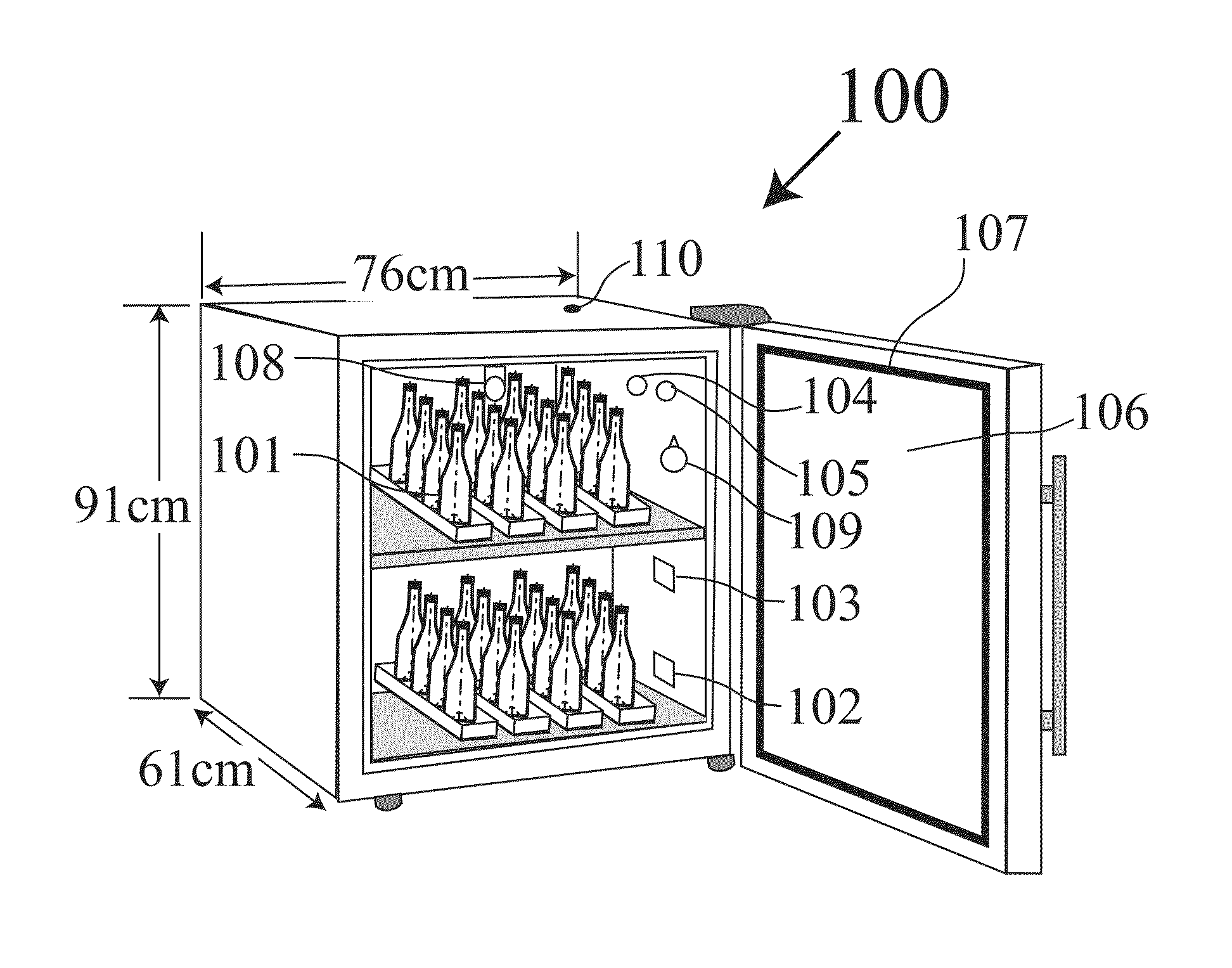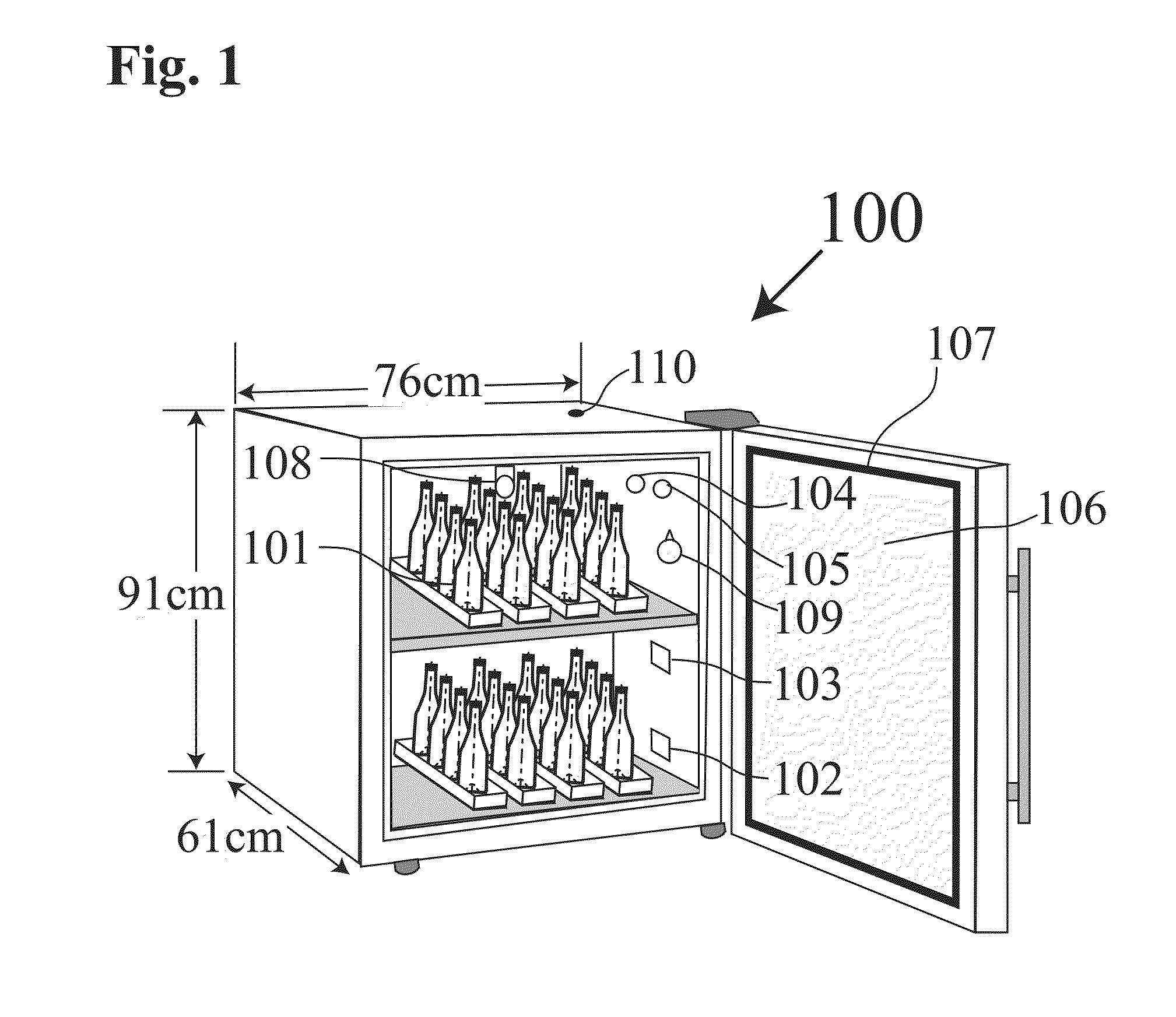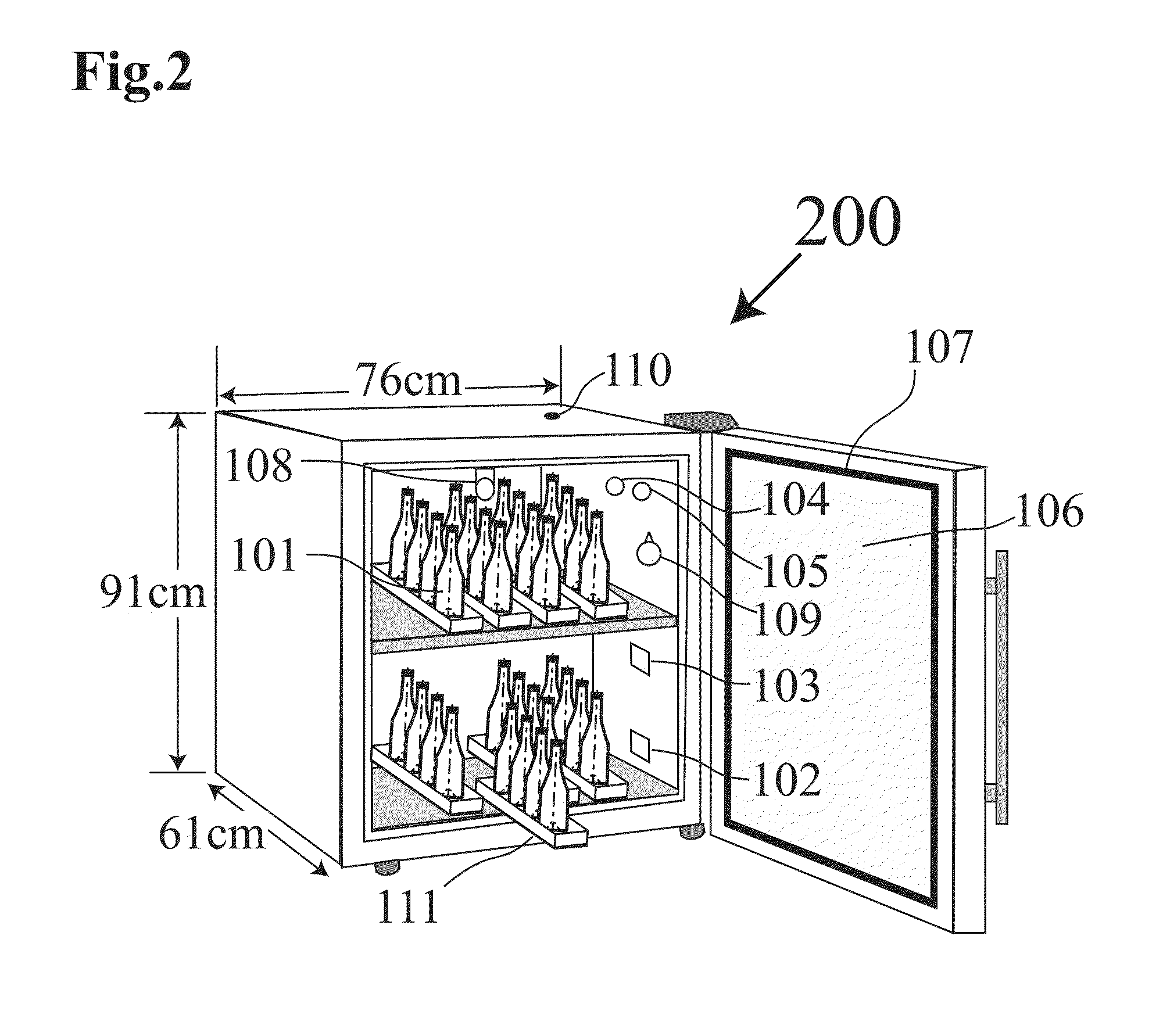System for aging beer
a technology for aging systems and beer, applied in the field of aging systems for beer, can solve the problems of unsuitable methods for aging beer, shrinkage of corks, and unpleasant taste and mouthfeel of beer, and achieve the effect of convenient placement and visualization
- Summary
- Abstract
- Description
- Claims
- Application Information
AI Technical Summary
Benefits of technology
Problems solved by technology
Method used
Image
Examples
Embodiment Construction
[0036]This invention relates to a fridge system designed to age corked high quality beer for prolonged periods, typically several years in order to develop enhanced flavor and taste. The craft beers are typically sealed using high quality cork. Craft beers are often unpasteurized and produced in a manner that leaves varying degrees of sediment in the bottle in the finished beer product. This sediment consists mostly of yeast but also of malt protein complex. The sediment present within beer will settle during aging and should not be poured into the drinking glass when serving aged craft beer because the sediment has an undesirable taste, mouthfeel, and appearance. This is accomplished by storing the corked beer bottles in a vertical orientation, which allows the sediment to settle at the bottom of the beer bottles.
[0037]Proper aging of craft beer requires specific conditions including temperature in the range of 10° C. (50° F.) to 15.6° C. (60° F.). The beer contained in the bottles...
PUM
 Login to View More
Login to View More Abstract
Description
Claims
Application Information
 Login to View More
Login to View More - R&D
- Intellectual Property
- Life Sciences
- Materials
- Tech Scout
- Unparalleled Data Quality
- Higher Quality Content
- 60% Fewer Hallucinations
Browse by: Latest US Patents, China's latest patents, Technical Efficacy Thesaurus, Application Domain, Technology Topic, Popular Technical Reports.
© 2025 PatSnap. All rights reserved.Legal|Privacy policy|Modern Slavery Act Transparency Statement|Sitemap|About US| Contact US: help@patsnap.com



